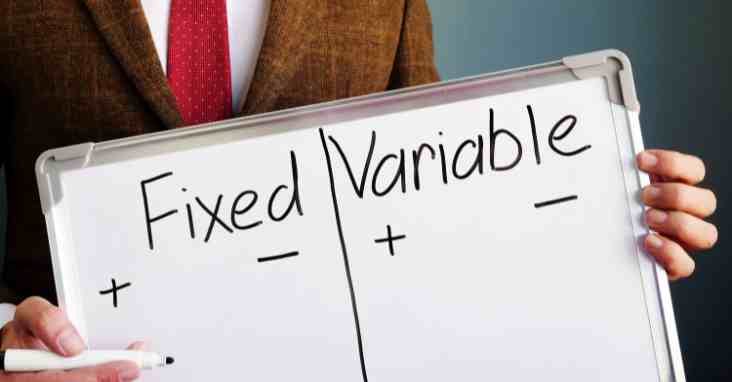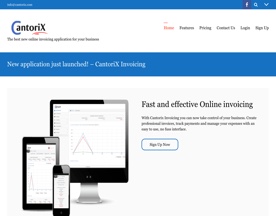Hello there! Ever pondered how businesses calculate the cost of that T-shirt you just bought, or perhaps the delicious cup of coffee you sipped this morning? When it comes to pricing and profit, it’s not just about intuition or guessing the numbers. A crucial component of determining the right price is understanding variable costs. If you’re looking to get a grip on what makes your product or service tick financially, you’ve come to the right place.
In this article, we’ll dive deep into the world of variable costs, breaking down what it is, how it affects businesses, and most importantly, how to find variable cost. So, grab a coffee (or tea, if you prefer) and let’s dive in!
How to Find Variable Cost: Dive into the essentials of calculating variable expenses in business. Grasp the variable cost formula, implications, and tools to ensure profitable decisions.

What is Variable Cost? Delving Deeper
At the heart of every successful business operation lies an understanding of costs, with variable costs being a pivotal player. When we talk about variable costs, we’re referring to the costs that aren’t fixed, which might sound a tad obvious, but let’s delve deeper.
Unlike fixed costs, which do not change per each unit of production, variable costs are related directly related to each product a company produces or service it delivers. Variable costs are those expenses that change and fluctuate directly in response to the volume of goods or services a company produces. This is in stark contrast to fixed cost, which don’t budge even if you ramp up or scale down production. Imagine variable costs as the tide — rising with increased production and receding as production falls.
An Everyday Example:
Picture this: You’re running a small artisanal bakery. The more bread loaves you bake, the more flour, yeast, and other ingredients you’ll need, right? These ingredient costs increase as you bake more and decrease when you bake less. In this scenario, the cost of your ingredients is a variable cost.
However, why does this distinction even matter? Being aware of what comprises your variable costs and how they behave gives you better control over pricing, profit predictions, and operational adjustments. Plus, in the fluctuating world of business, it’s always smart to know what costs you can scale with and which ones remain unchanged.
Key points to remember:
Variable costs fluctuate with changes in production volume.
They are distinct from fixed costs which remain unchanged regardless of how much you produce.
Awareness of variable costs aids in informed pricing, profit estimation, and business scaling decisions.

Why is Understanding Variable Cost Important? A Closer Look
Navigating the complex waters of business finance requires more than just a surface understanding. Grasping the intricacies of variable cost stands as a testament to this very notion. But why does it hold such a pivotal position? Let’s dissect its significance.
Pricing Strategy: Price is a major driver in a consumer’s decision-making process. If set too high, you risk alienating potential customers; too low, and you may not cover your costs or achieve desired profit margins. By comprehending variable costs, businesses can make informed pricing decisions that not only cover these costs but also ensure a healthy profit margin, and align with market expectations.
Profit Margins: Profit isn’t just about revenue; it’s also about controlling costs. A clear understanding of variable costs allows businesses to accurately determine profit margins for each product or service. This, in turn, informs pricing strategies, promotional offers, and bulk production decisions.
Budgeting and Financial Forecasting: The ability to predict costs plays a foundational role in financial planning. Understanding variable costs makes it easier to anticipate future expenses as production scales up or down, paving the way for realistic budgeting and more accurate financial forecasting.
Decision Making and Business Adaptability: Business landscapes can change rapidly. Whether it’s a sudden spike in demand due to unforeseen circumstances or an unplanned downturn, being intimately familiar with variable costs allows businesses to adapt quickly. With this knowledge, scaling up production or cutting back becomes a calculated decision rather than a mere reactionary move.
Operational Efficiency: Delving into variable costs might reveal areas of inefficiency or potential savings. For instance, a business could identify suppliers offering more competitive rates or alternative production methods that lower costs. This proactive cost management can significantly enhance operational efficiency.
Informed Expansion Plans: If a business is considering branching out into new product lines or entering new markets, understanding variable costs will be invaluable. It provides insights into the financial feasibility of such expansions, ensuring ventures are grounded in fiscal reality.
By now, it’s evident that variable costs aren’t just mere numbers on a balance sheet; they play a dynamic role in shaping the direction and success of a business.
Key points to remember:
Accurate pricing hinges on understanding variable costs.
It’s a linchpin for determining and maintaining desired profit margins.
Ensures precise budgeting and effective financial forecasting.
Empowers businesses with adaptability and quick decision-making capabilities.
Highlights potential operational efficiencies and savings.
Provides a roadmap for informed business expansions.

How to Calculate Variable Cost: Step-by-Step Guide
Unraveling the tapestry of business finance can feel like a daunting task, but with the right tools and understanding, it can be simplified. One such tool in this tapestry is the ability to accurately calculate total variable costs. It’s not just about crunching numbers; it’s about deriving meaningful insights that can steer a business towards profitability and growth. Let’s break down the process.
1. Determining the Total Quantity of Output:
First and foremost, you need to know the volume of your production. This is essentially the total number of products or services your business has produced within a given period. Whether it’s the number of handmade crafts you’ve completed in a month or the total number of consulting hours in a week, getting this figure right is pivotal.
2. Establishing the Variable Cost Per Unit:
Once you’ve got your production figures, the next step is to figure out how much it costs to produce one unit of that product or service. This can encompass various elements, including:
Raw materials: The core components needed to create your product. For example, the cloth and thread used in apparel manufacturing.
Direct labor: This pertains to the wages of employees directly involved in the production process. If you’re in a service industry, think of it as the hourly rate of the service provider.
Packaging: If your product requires packaging, those costs should be included here.
Utilities for production: This includes the cost of electricity, water, or any other utility directly used in the production process.
By summing up these costs for a single unit, you’ll have your variable cost per unit.
3. Crunching the Numbers:
Now, armed with the total quantity of output and the variable cost per unit, the calculation becomes straightforward:
Variable Cost = Total Quantity of Output x Variable Cost Per Unit of Output
This equation will give you a total figure that represents your variable costs over the production period in question.
4. Regular Reviews and Adjustments:
It’s essential to remember that variable costs can and often do change. The price of raw materials might fluctuate, or wage rates could vary. Hence, regularly reviewing and recalculating your variable costs ensures you stay updated and can make informed financial decisions.
Key points to remember:
Begin by accurately determining your production volume.
Establish the cost components of producing a single unit.
Use the total variable cost formula to calculate the overall variable cost.
Regularly review and adjust to account for changes in costs or production methods.
While similar, the average variable cost formula (AVC) is a different calculation that informs you of how much on average it costs to produce a single unit of product. If you divide the total variable cost by the total output produced, then you calculate average variable cost (AVC)

Software Tools to Help Calculate Variable Cost: Tech at Your Fingertips
In the digital age, there’s a software solution for nearly every business challenge, and variable cost calculation is no exception. Leveraging technology can not only simplify the process but also offer more in-depth insights, historical tracking, and predictive forecasting. So, let’s explore some of the top tools available to assist you in this endeavor.
QuickBooks
One of the most renowned accounting software options out there, QuickBooks offers comprehensive features to track both income and expenses. With its user-friendly interface, you can easily categorize expenses, track changes in variable costs over time, and even set alerts for specific thresholds. Its integration capabilities with other tools make it a versatile choice for businesses of all sizes.
Microsoft Excel
While it might seem old-school, Excel remains a powerful tool for variable cost calculations. Using formulas, businesses can create customized sheets that auto-calculate based on input data. Moreover, with Excel’s data visualization tools, businesses can chart and graph variable cost trends, facilitating more visually informed decisions.
FreshBooks
Designed for freelancers and small businesses, FreshBooks provides a more niche approach to accounting and cost calculations. Its intuitive dashboard allows for easy tracking of expenses, and its robust reporting tools can help identify trends in total variable costs. The cloud-based solution ensures you can access your data from anywhere, anytime.
CostMinder
While not as popular as the others, CostMinder is a dedicated cost management tool that specializes in helping businesses monitor and predict variable costs. With features like predictive analytics, it gives businesses a sneak peek into future cost trends based on historical data.
Zoho Books
Part of the Zoho suite, Zoho Books offers robust accounting solutions tailored for small to medium enterprises. With automated workflows, businesses can set up systems that auto-categorize and calculate variable costs, saving time and reducing the possibility of human error.
Why Should You Use Software Tools?
Efficiency: Automated calculations and data input mean faster results with less effort.
Accuracy: With set formulas and algorithms, the risk of manual miscalculations is significantly reduced.
Insights: Modern software doesn’t just calculate total variable cost; they offer insights, reports, and analytics, providing a deeper understanding of cost trends and patterns.
Scalability: As your business grows, these tools can handle larger datasets and provide more advanced features to cater to more complex calculations.
Key points to remember:
Software tools simplify and enhance the process of calculating variable costs.
Choose a tool that aligns with your business size and specific needs.
Apart from calculation, tools provide valuable insights and trends.
Investing in a good software tool ensures efficiency, accuracy, and scalability.

FAQ
What is the difference between fixed and variable costs?
Fixed costs remain constant regardless of production levels, while variable costs fluctuate with the production volume.
How does variable cost impact pricing?
Understanding variable cost helps businesses set a price that covers the cost and ensures profitability.
Can variable cost be reduced?
Yes, by optimizing production processes, negotiating with suppliers, or finding cost-effective alternatives.
Is labor a variable cost?
In businesses where labor is directly tied to production, such as manufacturing, labor can be considered a variable cost.
Why is it essential to differentiate between fixed and variable costs?
Differentiating helps in financial planning, budgeting, and making informed business decisions.
Does variable cost include overhead expenses?
No, overhead expenses are typically considered fixed costs unless they directly fluctuate with production.
How do economies of scale impact variable cost?
As production increases, variable costs per unit can decrease due to economies of scale.
Can a cost be both fixed and variable?
Some costs, termed as semi-variable or mixed costs, have both fixed and variable components.
Does variable cost affect break-even point?
Yes, understanding variable costs is essential in determining the break-even point for a product.
Is packaging a variable cost?
Generally, packaging is a variable cost as it changes with the number of products produced.

Conclusion: Navigating the Landscape of Variable Costs
In the multifaceted world of business finance, understanding variable costs is akin to possessing a compass in uncharted territory. These costs don’t merely represent fluctuating expenses; they are the lifeblood of informed decision-making, strategic planning, and overall financial health of a business.
Throughout this exploration, we’ve demystified variable costs, not just as an abstract concept but as a tangible, actionable component of a business’s financial toolkit. We have seen how they differentiate from fixed costs, how they play a pivotal role in pricing and profit strategies, and how tech-savvy tools can simplify their calculation.
But, what’s the broader narrative here?
It’s about empowerment. By mastering variable cost calculations and understanding their ebb and flow within a business framework, entrepreneurs, managers, and financial professionals alike equip themselves to make more informed choices. Whether it’s tweaking a product’s price, adjusting production, or forecasting financial trends, the knowledge of variable and fixed costs serves as a foundation.
Moreover, in an era where technological advancement is not just a luxury but a necessity, embracing software solutions isn’t merely about ease of calculations. It’s a forward-thinking approach that ensures accuracy, offers deeper insights, and allows scalability.
For anyone journeying through the business landscape, my parting advice is this: immerse yourself not just in the “how” of variable costs but in the “why.” Recognize its importance, value its implications, and continuously evolve your understanding. By doing so, you don’t just become better equipped to navigate the financial challenges of today but also to anticipate and shape those of tomorrow.
Key points to remember:
Average variable costs are more than just numbers; they’re strategic insights.
Their understanding fuels better decision-making and planning.
Technological tools amplify the ease and accuracy of understanding these costs.
Constantly evolving and updating this knowledge is crucial in the ever-changing business world.















